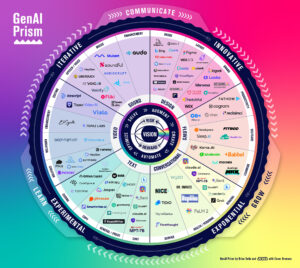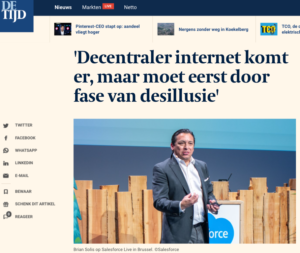
Nielsen recently released a new report that officially documents what many of us already know, just never substantiated through data. According to a study published at the end of January 2010, Nielsen observed the online social activity of consumers around the world and discovered an 82% increase in time spent on social networking sites in December 2009. On average, users spent more than five and a half hours on popular networks such as Facebook and Twitter in December 2009. In December 2008, users clocked just over three hours on social networking sites.

The audience for Social Networks also increased year-over-year for the last three years, reaching an estimated audience of over 300 million.
Specifically, online visitors concentrated their time on social networks and blogs, placing them ahead of other forms of engagement and interaction including online games and instant messaging. Facebook led the way for all social networks however, with over 200 million visitors, representing 67% of all social media users in December 2009. As such, Facebook earned the number one position as the top global social networking destination with users spending nearly six hours per month on the site.

In the U.S., time spent participating in social networks and reading blogs increased 210% year-over-year and the average time per person grew by 143% year-over-year in December 2009. Media darlings Facebook and Twitter captured the greatest volume of attention and engagement, outpacing the overall growth for the category at 200% and 368% respectively. And despite the grim reports that portray a leveling-off or possibly a dwindling of visitors, depending on which data you source, Nielsen reports that Twitter continued its reign as the fastest-growing social network in December 2009 as measured by unique visitors. With 18.1 million uniques, Twitter’s audience increased 579% year-over-year, from 2.7 million in December 2008. However, Nielsen also observed a decrease of 5% in unique visitors when viewed month-over-month.
Facebook and Twitter were alone in the competition for attracting visitors. MySpace, Classmates, and even LinkedIn realized year-over-year declines in unique visitors.
Social Networking is a global phenomenon and while the largest audience resides in the U.S., Australia boasts the highest amount of time spent in social networks per person (6:52:28), followed by the U.S. (6:09:13), the United Kingdom (6:07:54), and Italy (6:00:07).
When reviewing the size of the audiences for social media around the world, we see a substantial, but expected divergence between each country.
| Country | Unique Audience (000) | Time per Person (hh:mm:ss) |
|---|---|---|
| United States | 142,052 | 6:09:13 |
| Japan | 46,558 | 2:50:21 |
| Brazil | 31,345 | 4:33:10 |
| United Kingdom | 29,129 | 6:07:54 |
| Germany | 28,057 | 4:11:45 |
| France | 26,786 | 4:04:39 |
| Spain | 19,456 | 5:30:55 |
| Italy | 18,256 | 6:00:07 |
| Australia | 9,895 | 6:52:28 |
| Switzerland | 2,451 | 3:54:34 |
| Source: The Nielsen Company | ||
As brands and marketers seek guidance and inspiration to engage customers, influencers, and stakeholders, their efforts only increase in importance. User attention is going to continue to focus on activity within social networks, and their potential reach is far greater than any one country.
Users celebrate the democratization of information sharing and discovery and they’re taking to social networks to cast their voice. The art and science of true engagement is measured by our ability to connect with people for greater durations and at deeper levels over time. And, it’s not as easy as it sounds. The competition for attention is substantial and therefore requires an increased sense of awareness, empathy and intelligence in order to conceptualize creative yet meaningful content and programs that captivate the people we hope to reach. It’s the difference between activating the social web and inciting consequential action and response that’s directed, measured, and memorable. In social media, we are defining and shaping experiences that either increase affinity or simply earn attention.
As I believe, in the race for relevance, we earn the relationships we deserve. And as such, we must choose between visibility and presence. In the attention economy, presence is felt.
Connect with Brian Solis: Twitter, LinkedIn, Tumblr, Google Buzz, Facebook
—
Pre-order the next book, Engage!

—
Click the image below to get the current book, poster, or iPhone app:



—
Image Credit: Shutterstock





well! this does not come as a surprise. for more tips on social media for your e-commerce website, i found this one helpful http://bit.ly/aKM5NF
Wow, these data certainly confirm something we’ve been realizing lately – social media is growing continuously and at faster rates. They become more powerful as more and more people search for networks and connections and can’t keep themselves away from their devices. Good or not, it’s undeniable that establishing relationships in social media has become a constant in our lives today. Whether or not we’re careful or smart about the relationships we build is up to us. Personal responsibility should also come to play. After all, in media as viral and widespread as these social sites, we wouldn’t reach any order or secure established practices if we ourselves don’t become accountable.
P.S. Check these out and see how building successful relationships (http://budurl.com/hw8s) and getting your words out there through blogging (http://budurl.com/nhs8) has revolutionized the way we view success and interact with the world.
This is interesting. I wonder are there any numbers for China/Hong Kong? Am surprised CH is so low.
It's very interesting to see that as more people adopt social media as a daily part of their lives, like using a cell phone, the ways that people using social media continues to change. This rapid evolution is giving us more opportunities for innovation and connection that have never been seen before. It seems like social media is moving form the fringes to the mainstream so fast that even last year's naysayers are now participating in communities.
So true. And with more people jumping in, there are more incentives for one to participate on social networks with a growing amount of people they know being there as well.
Thanks for a nice compilation of data that confirms what we already know. What resonated most with me were your comments relative to creating meaningful content and programs that captivate people and lead to increased affinity rather than simply earning attention or just being seen. I couldn't agree more that we earn the relationships we deserve–well said!
Thanks for reading and commenting Michael!
I see it as a next step trend, urged by social recommendations' movement across the world. Online WOM is now more credible than any advertising message, so that social networking is only predicted to grow. more on it : http://ow.ly/1bj7F
No doubt! I'm always on facebook or something else. Seems like my fingers just direct me there without me even thinking of it.
I think your headline “Time Spent on Social Networks up 82% Around the World” is fairly accurate. I know a lot of outdoors people (mostly hikers) who spend every weekend in the wilds. Most of them abhor television, but they do spend quite a bit of time on meetup.com and facebook.com, even when they are not using these networks to organize outdoor activities.
Great information Brian, we can see a new trend coming up on social media as the proliferation of social networks increase on much more focused ones. However, Facebook is still ruling and we can expect that continue to arise. The importance of social media has turned essential to keep businesses on the game and make them sustainable within the years. I've seen an interesting question on Startups.com about the upcoming Facebook Pages. Follow this link http://bit.ly/9a4qjJ
With more people on social networks, the face of business is actually changing. If we can use this to our advantage or disadvantage is up to us. To see how social media can be used in various scenarios, you might find this link helpful too http://bit.ly/bhY35h
With more people on social networks, the face of business is actually changing. If we can use this to our advantage or disadvantage is up to us. To see how social media can be used in various scenarios, you might find this link helpful too http://bit.ly/bhY35h
Great stats which begs the question – globally how much time are we spending talking on the mobile vs using it to access web or other actions (texting etc)? Has anyone seen credible stats on this?
If you want personalized stats on how much time you spend on Facebook/Twitter/Gmail/Youtube, you can try http://www.TimeOP.com
For instance, these are the top 5 apps in my case http://www.timeop.com/share/uKi6I6s
can anyone tell me the of the author, who wrote this article?
Hi, ummmm, what are the units, the the list of countries, the time spent, is that per day, per week what? thank you:P